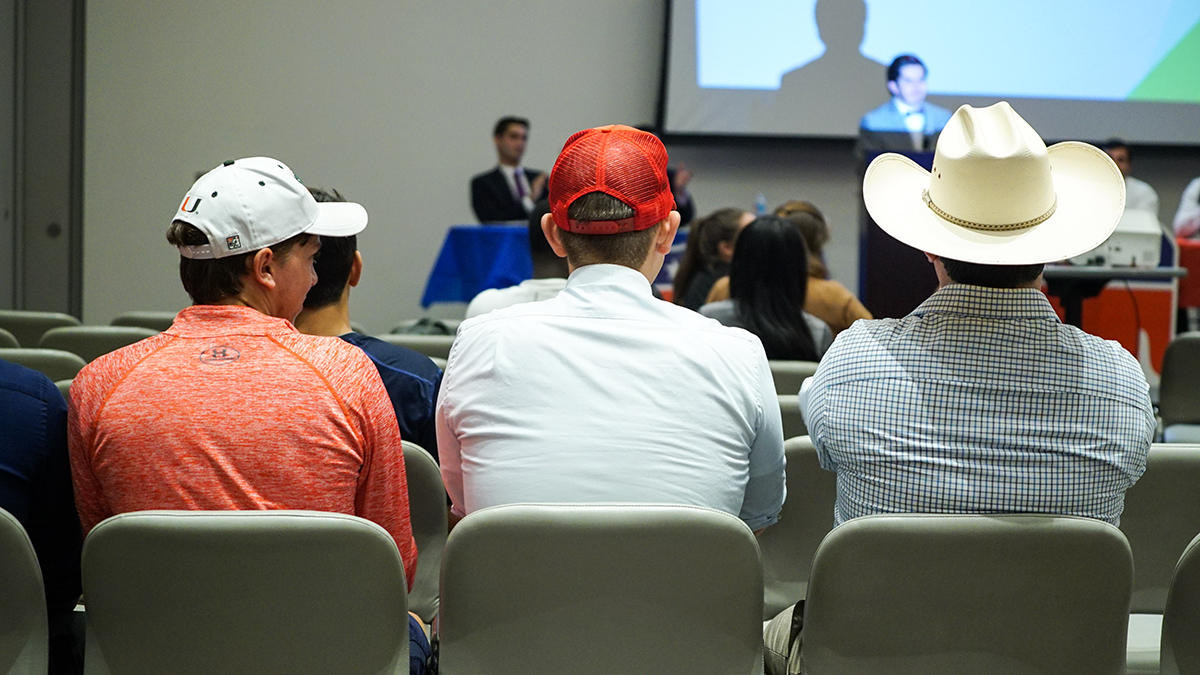[dropcap]A[/dropcap]s we approach what is perhaps the most divisive presidential election in recent history, political ideology has become increasingly central to identity. Ideology, at its best, inspires passion and activism, and at its worst, fuels disrespect and even hatred. This divisiveness was evident during Sunday’s debate in St. Louis, when the presidential candidates refused to even shake hands with each other prior to the debate.
As communities devoted to living, growing and learning together, universities have to constantly deal with clashes of ideology that only intensify during polarizing election years. When one view dominates, those who hold the minority opinion can feel disenfranchised and stereotyped. Diversity of ideology is absolutely necessary to create balanced learning and critical thinking, as well as respect for opposing opinions.
Therefore, to close our editorial series on diversity at UM, we explore how the University of Miami community can better foster the ideological diversity on campus and nurture those positive outcomes, particularly in the eventful month ahead.
UM leans to the left, as do most universities. A report published earlier in the campaign by The Tab documented that 60 percent of faculty donations were made to Hillary Clinton’s campaign; the other 40 percent was split between the other Republican candidates and Bernie Sanders.
In the classroom, professors can be very vocal about their political opinions, whether that’s a subtle joke woven into a lecture or an actual discussion of their political beliefs.
When professors deride or mock certain political views in their teaching, that only alienates students and undermines the purpose of an educational forum. Part of the reason that conservative students feel so disenfranchised from the media and academia may be because for most of their lives, the intellectual “authorities” in their lives have been liberal and taught in left-leaning ways.
On the other hand, when professors do present their ideas in a way that invites dialogue, it affirms to students that they do belong in the classroom and their voices matter. Regardless of the straw-man arguments demonizing both major political parties, we must remember that there are legitimate reasons to stand with both conservative or liberal ideals.
Courses like The Election are great because they expose students to professors and guests from both sides of the aisle, which can help break down the barriers of bias. It is much easier to dismiss the opinions of a peer, a social media troll, or a crazy uncle than it is to automatically dismiss the ideas of an authoritative figure who has a Ph.D. in the relevant discipline. Ideological diversity may also help students recognize the flaws in their own opinions and be more self-critical.
When conversations focus on sweeping platitudes rather than individual reasons, our personal networks suffer as well. Too many students have given up Facebook friends or real-life acquaintances over political differences. It’s easy to generalize a whole group of people just based on one or two beliefs that they voice, but these generalizations create many false assumptions, especially in this election when few people are completely behind their candidate.
[pullquote]”Would either of you name one positive thing that you respect in one another?”
Karl Becker, debate audience member on Sunday.[/pullquote]
Restrain from automatically assuming that another student is racist, sexist, elitist or corrupt due to a few of their demonstrated ideological beliefs. People have reasons for holding their beliefs, and if they’re willing to talk about it in a respectful way, then take the opportunity to respond with dialogue rather than a diatribe. Identity politics has made political opinions just as personal as ethnicity and religion, making it hard to separate feelings from ideas.
In terms of university policy, there has been national discourse over the viability of so-called “safe spaces.” The University of Chicago dean sent out a letter to incoming freshmen in August that opposed safe spaces due to its commitment to “freedom of inquiry and expression.” The “safe space” label often suggests suppression of ideas that may be unpopular, uncomfortable or politically incorrect.
A healthier alternative for a “safe space” is a “brave space.” A “brave space” encourages people to freely explore different questions and issues – still trying to respect other people, but not restricted by the fear that certain ideas make others feel uncomfortable.
The goal of a diverse college campus is not to create comfortable spaces, but to be caught a little off guard by all of the different types of people and ideas that might not be found in East Portland or a small town in South Dakota. That’s okay. If we embrace that vision, we can create a more tolerant, educated and cooperative community.
The nation’s weariness with the political divide was voiced by audience member Karl Becker, who posed the final question to the candidates in the debate: “My question to both of you is, regardless of the current rhetoric, would either of you name one positive thing that you respect in one another?”
The question served as a sharp rebuke for the vitriolic, personal tone that both liberals and conservatives have taken this election year. However, the candidates’ relatively civil responses also illuminated how easy it was to shift the conversation back to a place of respect and openness, no matter how far gone that conversation may seem.
Editorials represent the majority view of The Miami Hurricane editorial board. Today’s editorial is the last of a three-part series on diversity. The previous two installments ran in the Aug. 25 and Sept. 15 print issues.






